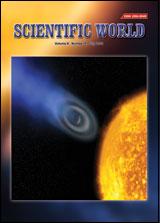Detection of Coccidian Parasites and their Clinical Manifestation, Treatment and Prophylaxis in HIV Infected Patients in Tribhuvan University Teaching Hospital
DOI:
https://doi.org/10.3126/sw.v8i8.3849Keywords:
AIDS, Coccidian, Diarrhea, HIV, ART, OIsAbstract
The objective was to know the prevalence of coccidian parasites, their clinical manifestation, treatment and prophylaxis in HIV infected patients in Tribhuvan University Teaching Hospital, Nepal.
A total of 300 stool samples from 128 (64.00%) HIV patient without previous history of treatment with antiretroviral therapy (ART), 72 (36.00%) under ART treatment and 100 HIV seronegative control samples were collected and examined by wet mount, Kinyoun modified Ziehl Neelsen staining, Sheather's sucrose flotation and modified formalin-ethyl acetate sedimentation methods.
The coccidian parasites were detected in 22 (11.0%) of the 200 HIV infected patients, 18 (9.0%) without ART and 4 (2.0%) with ART undertaking patients. Those without ART had majority of 11 (8.5%) Cryptosporidium spp and those with ART had equal percentage of 2 (0.03%) Cryptosporidium spp and 2 (0.03%) Cyclospora spp. The prevalence of coccidian parasites was significantly higher in patients with diarrhea (20/22) than in those without diarrhea (2/22) (P value < 0.05). The drug therapy indices of the antibiotic, Cotrimoxazole given for 30 days in combination with ART for treatment and/or prophylaxis for opportunistic infections showed that long term treatment was needed for the clearance of coccidian parasites. Among 8 Cyclospora identified, 7.6% cleared from stool anlaysis after 30th days of treatment likewise 15.3% of Cryptosporidium cleared after 45th days of treatment.
In conclusion, Cryptosporidium followed by Cyclospora appeared to be the predominant coccidian parasite associated with diarrhea among HIV patients. Clinicians are requested to query for coccidian parasites to evaluate diarrhea in HIV patients. Cotrimoxazole is the drug of choice in curing coccidian parasites. So, it should be given along with ART as a treatment and/ or prophylaxis that act against both opportunistic infections as well as coccidian parasites. However its side effects should be evaluated for its long term prophylaxis.
Key words: AIDS; Coccidian; Diarrhea; HIV; ART; OIs.
DOI: 10.3126/sw.v8i8.3849
Scientific World Vol.8(8) 2010 pp.51-55




